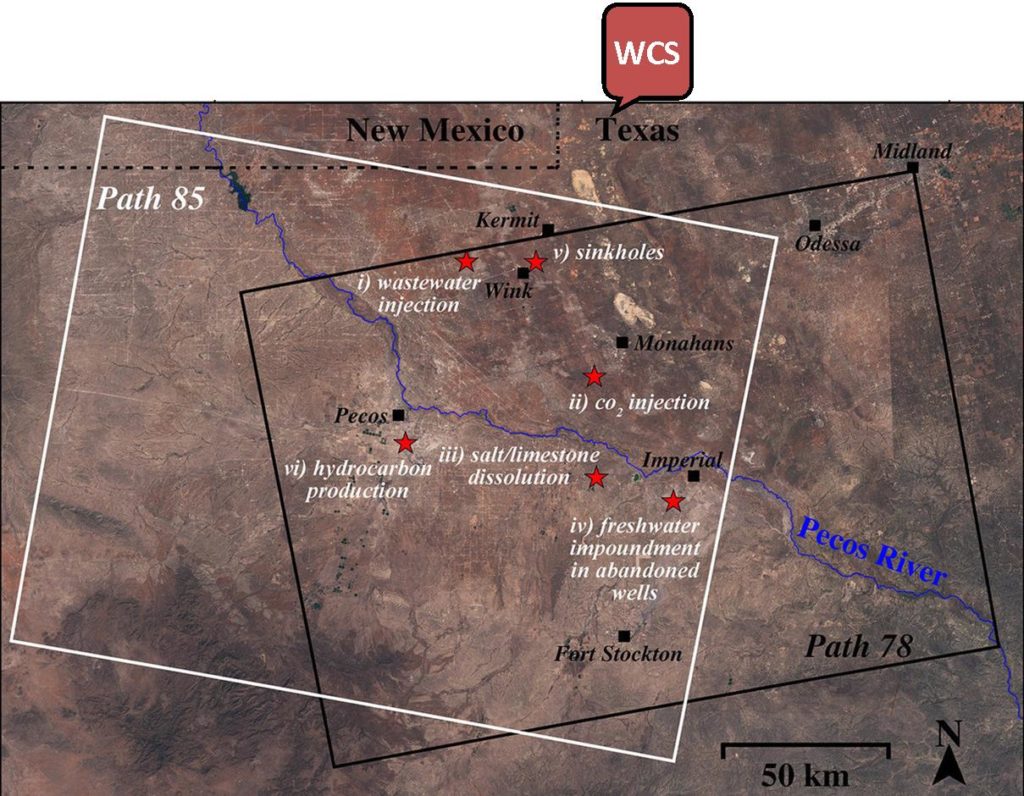
A new study by an SMU geophysical team found alarming rates of ground movement at various locations across a 4000-square-mile area of four Texas counties. (Zhong Lu and Jin-Woo Kim, SMU) Credit: Zhong Lu and Jin-Woo Kim, SMU. This shows where WCS is locating their proposed high-level radioactive interim waste storage facility in relation to the area in the SMU study.
A geophysical team from Southern Methodist University, near Dallas, TX is reporting that various locations in large portions of four Texas counties (Winkler, Ward, Reeves and Pecos) are sinking and uplifting with significant movement of the ground across a 4000-square-mile area—in one place as much as 40 inches over the past two-and-a-half years.
The scientists made the discovery with analysis of medium-resolution (15 feet to 65 feet) radar imagery taken between November 2014 and April 2017 which cover portions of four oil-patch counties where there’s heavy production of hydrocarbons from the oil-rich West Texas Permian Basin.
The imagery, coupled with oil-well production data from the Texas Railroad Commission, suggests the area’s unstable ground is associated with decades of oil activity and its effect on rocks below the surface of the earth.
The SMU researchers caution that ground movement may extend beyond what radar observed in the four-county area. The entire region is highly vulnerable to human activity due to its geology—water-soluble salt and limestone formations, and shale formations.
And right on the edge of the study area sits WCS’ proposed interim storage site for high-level radioactive waste. One of the geophysical team conducting the study, Zhong Lu, a professor in the Roy M. Huffington Department of Earth Sciences at SMU and a global expert in satellite radar imagery analysis, told reporters, “These hazards represent a danger to residents, roads, railroads, levees, dams, and oil and gas pipelines, as well as potential pollution of ground water. Proactive, continuous detailed monitoring from space is critical to secure the safety of people and property.”
With the NRC license application now going forward again, this is a new development about which Texas should be very concerned. We hope NRC will have SMU expand the scope of their study to include the area immediately surrounding the WCS site near Andrews, Texas and the Holtec site just across the border in New Mexico.
You can read about the findings in Phys.org or see the study in Nature.


